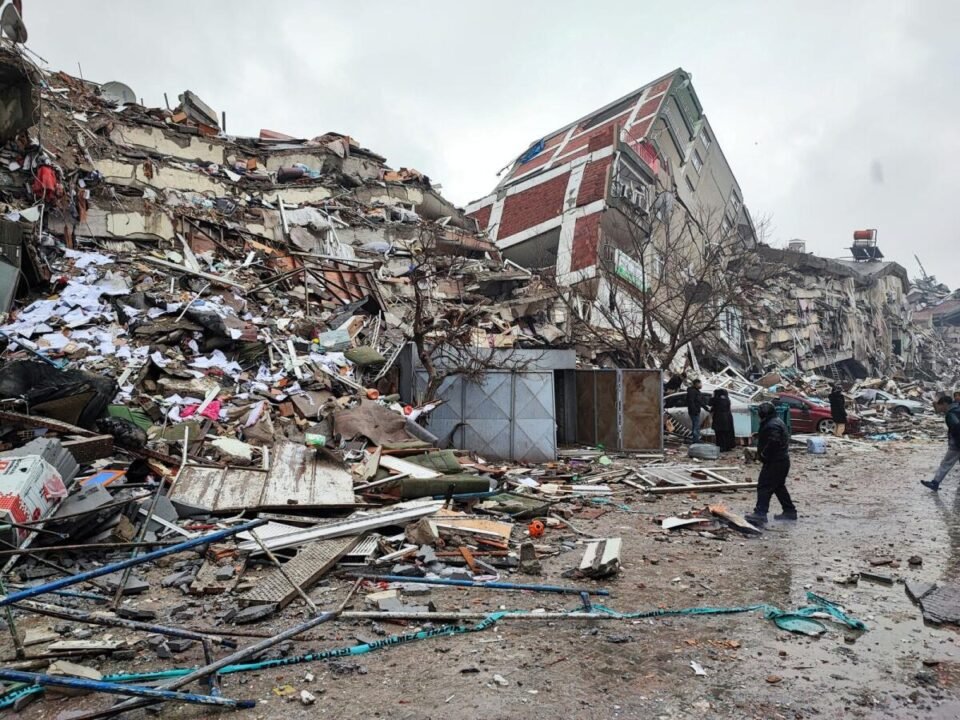By: Dipak Kurmi
The recent earthquake in Turkey has raised concerns worldwide about our readiness to handle such natural disasters. India, with 59% of its land vulnerable to earthquakes, faces an even more pressing issue. The country’s high population density, with 430 people per square kilometer (and over 25,000 in Mumbai), could have disastrous consequences in the event of an 8-magnitude earthquake or higher. In recent years, India has experienced significant earthquakes, including a 7.6 magnitude quake in Kashmir in 2005 that claimed over 80,000 lives and caused widespread destruction. In 2015, an earthquake in Nepal with a magnitude of 7.8 also caused extensive damage in parts of India. These events highlight the urgent need for India to enhance its earthquake preparedness and mitigation measures to minimize the loss of life and damage to property.
Over the past 15 years, India has experienced a minimum of 10 major earthquakes that have claimed numerous lives. The Himalayan region, in particular, is highly vulnerable to seismic activity, with scientists warning of a potential epicenter for earthquakes of 8 magnitudes or greater. Despite recent minor tremors, India has a long history of devastating earthquakes, including an 8.7 magnitude quake in Shillong in 1897, an 8 magnitude quake in Kangra in 1905, an 8.3 magnitude quake in Bihar in 1934, and an 8.6 magnitude quake in Assam in 1950. Scientists continue to warn that a powerful earthquake could occur at any time in the Himalayan region, which could have severe consequences for the country. The Latur earthquake in 1993, for example, was unexpected, resulting in over 20,000 fatalities. The 2001 earthquake in Gujarat’s Bhuj, with a magnitude of 7.7, and the 2005 earthquake in Kashmir, with a magnitude of 7.6, were equally destructive. Tremors continue to be felt in the states of Gujarat, Maharashtra, Uttarakhand, and the Northeast, emphasizing the urgency for India to improve its earthquake preparedness and mitigation measures.
In densely populated cities such as Kolkata, the construction of multi-story buildings has become necessary to accommodate the growing population. However, the question of earthquake resistance in these structures remains a concern. In comparison, Japan has implemented strict regulations ensuring that every building must be earthquake-resistant. This has proven to be an effective measure, as Japan has experienced minimal casualties during earthquakes, even in the face of the 9-magnitude quake that caused the 2011 tsunami. Similar measures are also employed in Europe, America, and Dubai, where skyscrapers are built with advanced technology that allows the structures to withstand high-magnitude earthquakes without collapsing. The adoption of such measures has been shown to result in fewer casualties and reduced damage during earthquakes.
The National Centre for Seismology has repeatedly warned that earthquakes with a magnitude greater than 7 can result in fatalities due to the lack of earthquake-resistant structures in our cities. Despite this, there are no enforceable regulations mandating the construction of earthquake-resistant buildings. The frequent collapse of buildings during construction, including roofs and bridges, goes largely unpunished for the contractors responsible. Although there is a rule requiring municipal officials to inspect and approve construction at each stage to ensure quality, this rule is not consistently followed. This lack of regulation and oversight exacerbates the problem of the illegal construction of multi-storey buildings. The cost of making a building earthquake-resistant is estimated to be 10-15% higher than that of a conventional structure, which is a deterrent for those seeking to maximize profits by constructing cheap housing. In such an environment, it is unlikely that earthquake-proof structures will be prioritized.
Preparation is key in mitigating the effects of earthquakes, as they cannot be prevented. Implementing strict building codes across the country and ensuring that at least urban structures are earthquake-resistant should be top priorities. This can be achieved by requiring that all new constructions in the country be built to meet earthquake-resistant standards. Additionally, educating the public on how to respond during an earthquake is crucial. The National Disaster Response Force (NDRF) can play a vital role in this by recruiting volunteers from the youth and incorporating earthquake preparedness lessons into school curriculums. Improving the medical system’s resources are also critical. The example set by Naveen Patnaik, the Chief Minister of Odisha, in effectively managing the aftermath of cyclones, highlights the importance of preparedness in the face of natural calamities. The entire country must adopt a similar level of preparedness and avoid actions that harm the environment. The failure to do so could result in a fate similar to that of ancient civilizations like Mohenjodaro and Harappa.
Following the devastating effects of a cloudburst in Uttarakhand, a parliamentary committee was convened and scientists specializing in disaster management were called to testify. During the proceedings, it was revealed that the scientists had repeatedly issued warnings to the government, which went unheeded. This highlights the importance of taking all warnings seriously and not ignoring the recommendations of experts in disaster management. It is commendable to note India’s swift and compassionate response in providing aid to Turkey following the earthquake, as instructed by Prime Minister Narendra Modi. This is in line with India’s past actions, such as their aid efforts in Nepal, and demonstrates the country’s cultural values of kindness and humanity. (The author can be reached at dipaknewslive@gmail.com)







